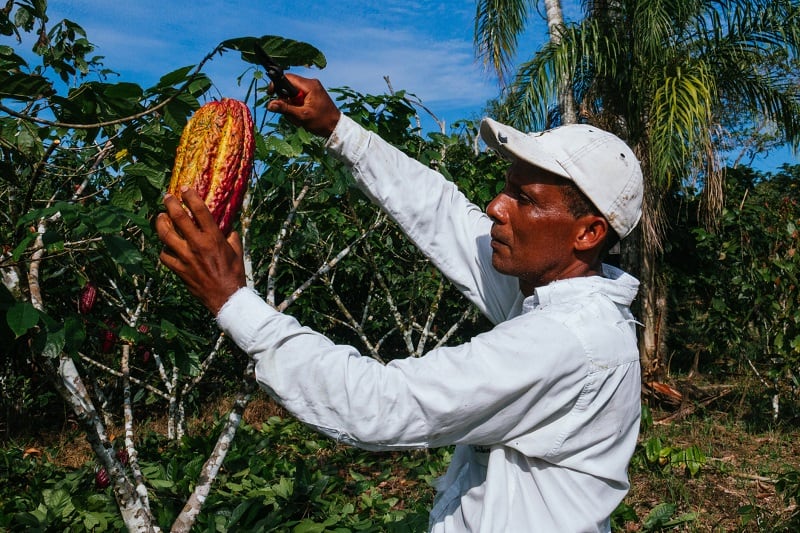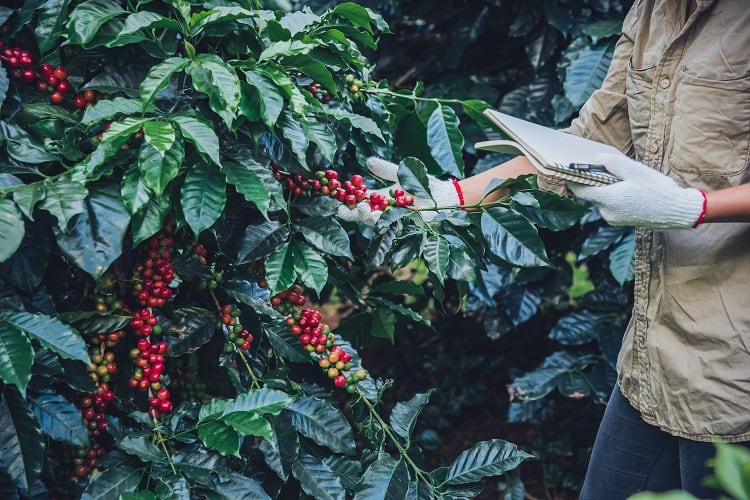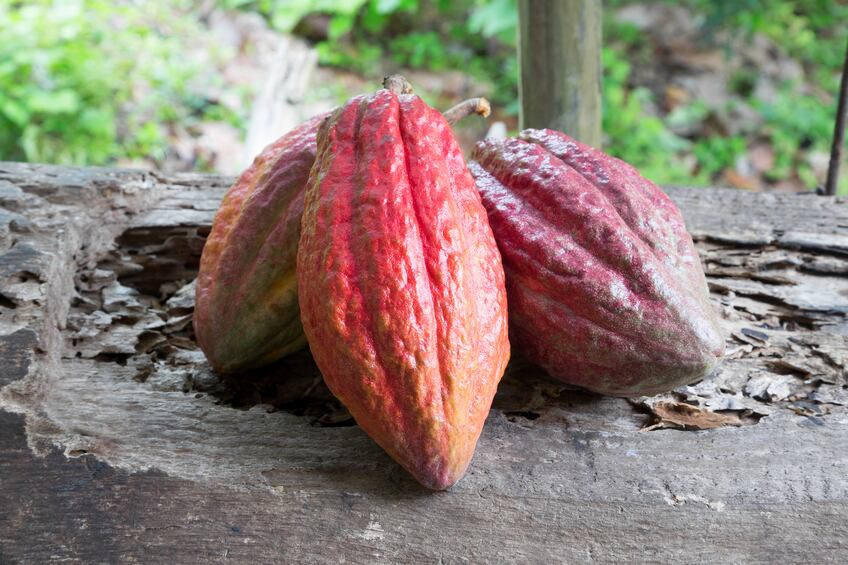The AtSource platform provides social and environmental footprints for every step of a product's journey. Data is generated and transparently reported by Olam’s teams on the ground who then work with farming communities and the customer to improve those footprints.
CEO of AtSource, Roel van Poppel, said the platform’s creation was driven by consumer demand for transparency and traceability in the food products they buy. In turn, food brands increasingly want help to increase sustainable production, to develop traceable supply chains, to demonstrate transparency and to be action focussed.
Agricultural supply chains are complex, meanwhile, and AtSource customers are asking for help to develop traceable supply chains.
"The idea was to link all we do on sustainability better with our customers,” explained van Poppel. “They want to improve supply chain transparency; they are unable to monitor where everything is coming from and what the start of their supply chain looks like. So we saw that and we wanted to connect everything we did better to our customers.
"Customers have been asking for help to increase sustainable production and develop more traceability in our supply chains and want to know how they can demonstrate transparency with the right data that is consistent and reliable. More and more there's a movement to become outcome driven and action-focussed and communicating about what you and your suppliers are able to achieve as improvements in your supply chain. Instead of accepting a status quo or communicating a status quo, also showing that you understand what's going on and that you're able to intervene in an impactful way."
Comprehensive insights across Olam's supply chain
Since launching in 2018, the AtSource platform has slowly built up its content and is launching to an increasing set of customers.
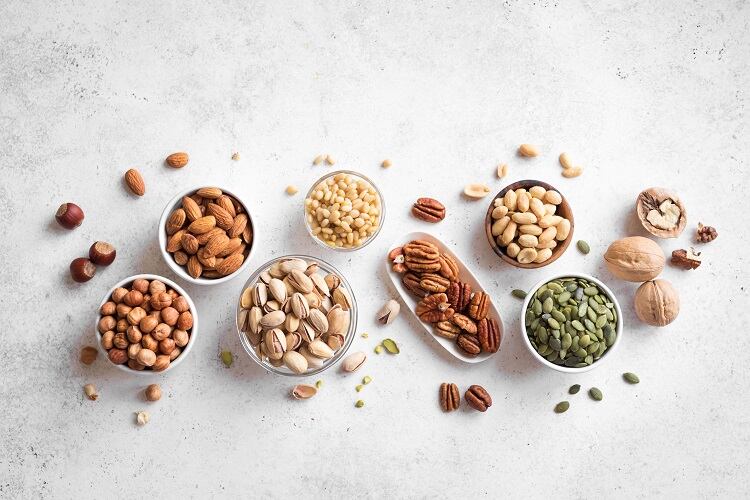
Olam sources multiple crops from a direct and indirect buying network of around 5 million global farmers, coupled with its own estates and farms; with processing facilities close to growing areas. It actively supports around 700,000 smallholders in collaboration with more than 50 customers, NGOs, lenders and financial institutions.
The AtSource platform, as a consequence, provides comprehensive insights across Olam's supply chain, with data on many crops including nuts, spices, coffee, cocoa, rice, cotton and palm in global markets.
"We aim to drive transparency across a set of metrics, so measurable elements of sustainability that we measure in our supply chains,” continued van Poppel. “If we measure something and it's not good enough, we want to improve it and we can generate an action plan. If through that action plan a specific metric changes for the positive you can claim that you’ve created an impact. So we are building narrative for our customers showcasing that impact. That’s the core of what the platform is about."
The platform is able to measure a host of metrics, focused on sustainability requirements of each supply chain, with data externally verified.
For example, it uses a digital footprint calculator in partnership with the Swiss sustainability company Quantis, which recently announced a carbon labelling partnership with margarine giant Upfield.
Other metrics might look at economic opportunities for farmers in the country of origin, their yields, their education opportunities and access to healthcare.
Metrics will be continuously added to the platform, said the CEO. “For example, if you think about farmer prosperity there's a lot of discussion around living income in cocoa. So which metrics that jointly determine whether a farmer has a living income we need to group that together in a more meaningful way potentially or even map living income from a farmer group.”
"As we add new supply chains onto to AtSource we are adding new metrics as they apply to that supply chain. For example, in our diary supply chain in Russia, we needed to create an animal welfare metric as this was not an issue in any other supply chain. So we have developed metrics to make sure we capture the right quantifiable elements in those supply chains.”
Three tiers of data with increasing granuality
The platform has three tiers of data. The 'entry level' data gives information and assurance that suppliers are engaged on responsible sourcing principles and practices under the Olam Supplier Code, with country-level footprinting and risk profiles.
Customers can see, for example, what are the typical sustainability risks in a particular origin, say child labour in Cote d'Ivoire, water shortages in California or deforestation in the Amazon.
The next level, AtSource+, has over 150 customisable metrics with farmer group level and Olam estate data to inform, monitor and drive economic, social and environmental interventions.
Another tier, the highest, is the most comprehensive and features bespoke, co-created programmes designed to deliver transformational ‘net positive’ impact at scale.
"We started this two years ago with five supply chains. Today we can say that quite a meaningful representation of our supply chains is on AtSource. The objective is to have by 2023 all of our physical supplied products at the entry level of AtSource."
Much of the data is sourced from Olam's 'boots-on-the-ground’ network of over 3,500 enumerators which generates insights and opportunities for action-orientated collaborations with customers and partners.
Van Poppel is proud of the granuality of the metrics "the granularity is on the different elements we are showing to the customer in the data,” he elaborated.
'Sustainability is becoming a pre-condition to be in business'
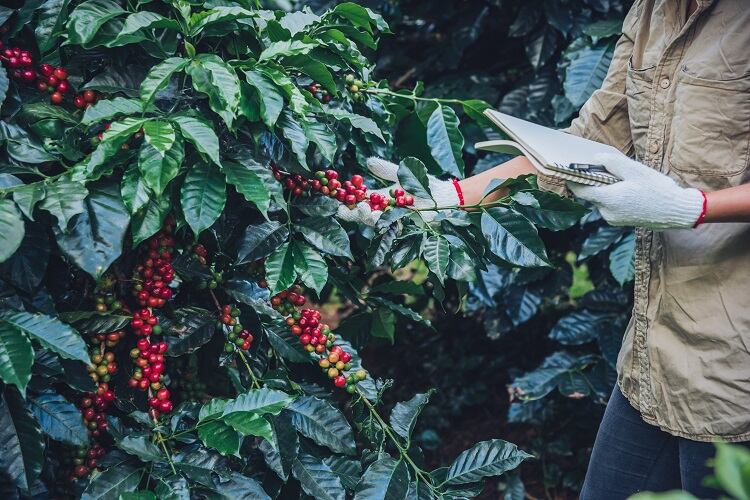
AtSource’s customers are able to use these metrics for their own end to build a positive narrative with which to better connect with the values of their consumers.
For example, a big food conglomerate may have a company-wide initiative to bring down its carbon footprint by 50% in five years. AtSouce will customise specific metrics to try to bring that down.
"Some of those metrics we can’t influence, but some are very actionable, like switching from switching from standard irrigation to drip irrigation to save water usage or measuring what lowering fertilizer does to yields -- that's the type of conversation we are having with our customers."
Coffee customers also might want to use the AtSource data to communicate what they are doing with their smallholder farmers supplying the coffee.
AtSource has been shown to around 150 customers including well-known global food companies and CPGs, retailers, category specials in the spice, nut and coffee industries. The target is to double that number by the end of this year.
“Of those 150 companies that we've liaised with only two have said they are not interested,” said van Poppel. “We are able to generate this data because of the way we are set, and we have been generating much of this data already. Now we're opening it up to those customers that want to drive that change like we have. Sustainability is becoming a pre-condition to be in business. Consumers will drive this transparency so our customers will have to live up to it.”


